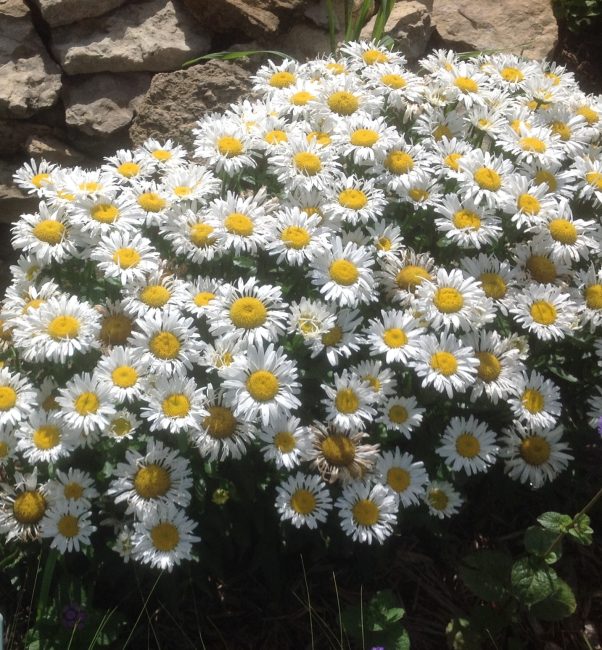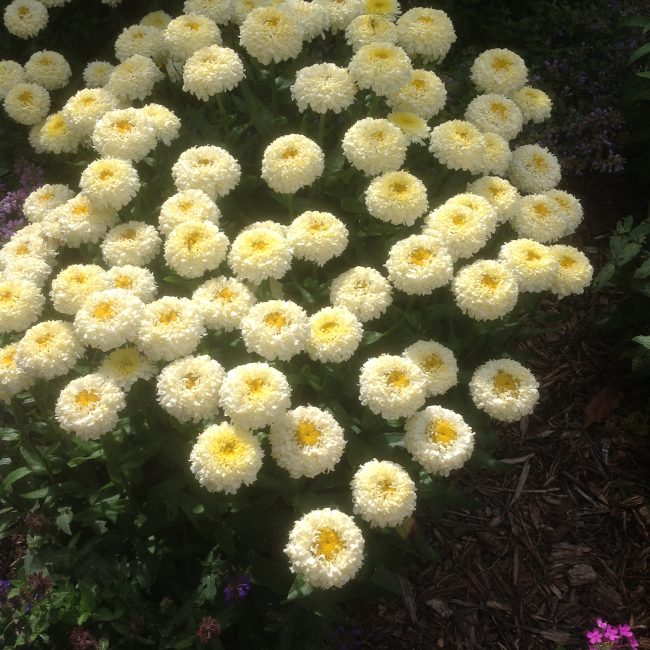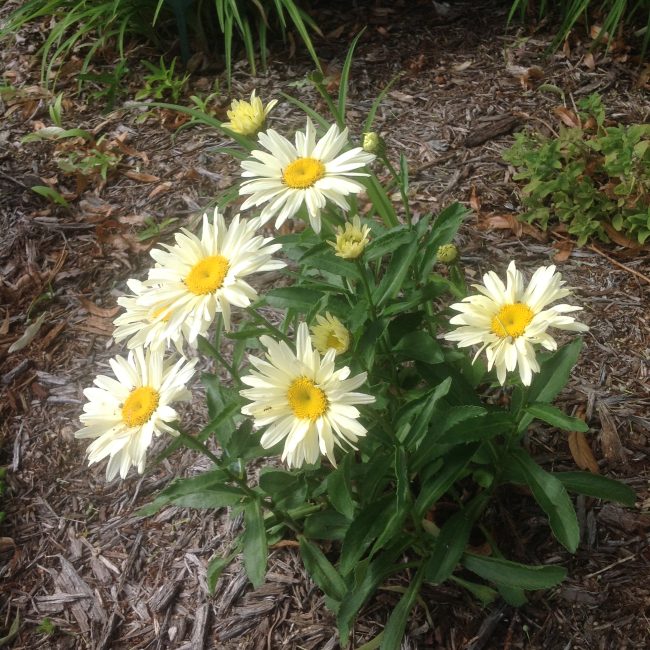This year, unlike last year, we have certainly not had to worry about watering! Everything is huge and luxuriant (unfortunately, this includes mosquitoes in the evening). So many things are flowering that I had trouble choosing what to cover. I decided that I would focus on ‘daisies’ since we have several cultivars (this word is a sort of contraction for ‘cultivated variety’) of Shasta daisies in various garden areas of the Teaching Garden.
I put ‘daisies’ in quotes since there are different genera of plants in the composite (or aster) family as well as different species within the genera. The family Asteraceae (formerly Compositae) is broken into various genera (singular genus) and within those genera, various species. A genus contains plants that have similarities in physiology and often, reproductive structures, within a family. The family has over 1500 genera and over 23,000 species worldwide. Only the orchid family is more complex. Many of the aster family plants don’t ‘look like’ most people’s concept of an aster or daisy; a round, flat flower with a yellow center and white ‘petals’. For example, liatris, the purple (blazing star), lettuce and dandelions are species in this family and none of them have the typical daisy construction. Why are ‘petals’ in single quotes? Well, here is why this family used to be called the composite family: what we think of as the center and petals, are actually two different types of tiny flowers gathered together in a head. A composite! The ‘center’ is composed of many ‘disc’ flowers and the ‘petals’ are ‘ray’ flowers. If you think of a dandelion seed head, every one of those tiny, bristled parachute-like structures that carry the seed came from an individual flower. Dandelions only have ray flowers; they have no disc flowers. So in a daisy, we have both kinds of flowers. The genus of daisies blooming right now in the Teaching Garden are mostly in the genus Leucanthemum. Within this genus is a hybrid species (Leucanthemum x superbum), with the common name of Shasta daisy. The original cross was developed by plant breeder Luther Burbank, near the white peaks of Mount Shasta in California. If you are of a certain vintage, like me, you probably remember Shasta daisies as rampaging roamers that didn’t stay where they were planted and seeded with giddy abandon all over creation (including the vegetable garden and the neighbor’s pristine lawn). Fear not, there has been a lot of excellent breeding since then.
Today’s Shasta daisies are clump forming, not seedy, have larger flowers, stronger stems and come in a variety of heights. Here are four that we have currently blooming in the Teaching Garden.

‘Snowcap’ is a dwarf cultivar that is blooming in our Pollinator Garden. It forms a nice mass, and last week I saw several flower flies and other pollinators visiting it. It is about 15-18″ tall and blooms June-late July. Shastas like sun and good moisture (but not soggy or super heavy soils). They sometimes get a little wilty in the heat of the afternoon (drama queens!) but perk up again when it gets cooler. For this reason, I like to put them where they can get a little afternoon shade. They still bloom nicely there!

This is another short-statured cultivar called ‘Luna’ with a ton of ray flowers, and a yellow hue that usually lasts a couple weeks before fading to cream and then to white. We have this beautiful clump near the front door in our Welcome Garden, in full sun. Total bloom time is about 4 weeks, but you can sometimes get some re-bloom by keeping it dead-headed. It keeps its perky good looks throughout the transition. It is a bit slower growing and about 8-10″ tall; nice for a border or rock garden.

This one is also quite short, about 4-6″, and has been blooming for a couple weeks already in our Rock Garden. The cultivar is Carpet Angel(TM). It needs good drainage and full sun. It has a very long bloom period, off and on all season! Keep it deadheaded to encourage this.

This final Shasta daisy is a slightly older cultivar called ‘Banana Cream’, with nice light lemon yellow ray flowers. It grows about 18-20″ tall; we have it in our Sidewalk Garden in mostly sun. The ray flower color tends to fade in full sun to a cream color. An improvement on this cultivar that looks very similar but is more compact (about 15″) and has brighter yellow ray flowers is ‘Goldfinch’.




